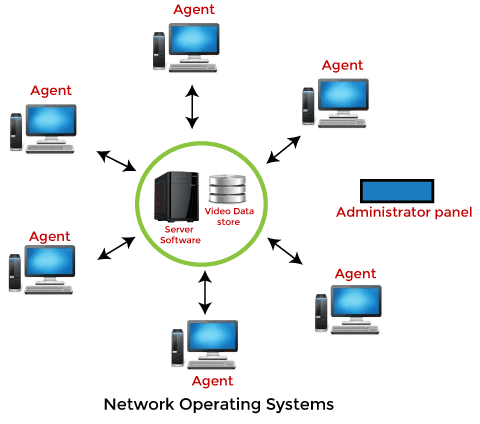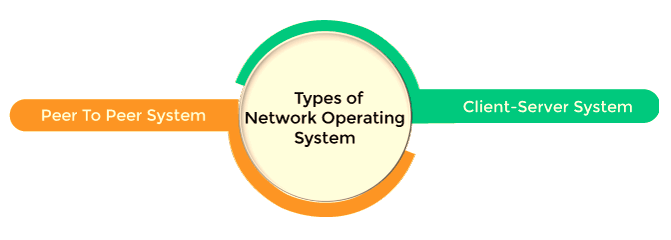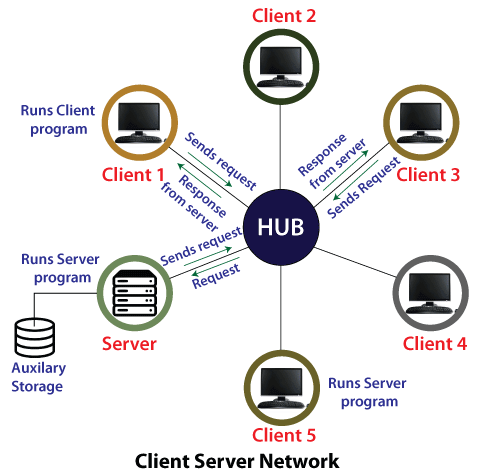Network operating systemIn this section we will understand the concept of network operating system in detail. What do you mean by network operating system?An Operating system, which includes software and associated protocols to communicate with other autonomous computers via a network conveniently and cost-effectively, is called Network Operating System. It allows devices like a disk, printers, etc., shared between computers. The individual machines that are part of the Network have their operating system, and the Network Operating System resides on the top of the individual machines. Since individual machines have their Operating System to access resources from other computers, they have to log into another machine using the correct password. This feature also results in no process migration, and processes running at different machines cannot communicate. The transmission control protocol is the common network protocol. 
The various Features of the Network Operating System are given below.
Types of Network Operating System Network operating systems can be specialized serve as:
Peer To Peer Network Operating System Peer To Peer networks are the network resources in which each system has the same capabilities and responsibilities, i.e., none of the systems in this architecture is superior to the others in terms of functionality. There is no master-slave relationship among the systems, i.e., every node is equal in a Peer Peer Network Operating System. All the nodes at the Network have an equal relationship with others and have a similar type of software that helps the sharing of resources. A Peer to Peer Network Operating System allows two or more computers to share their resources, along with printers, scanners, CD-ROM, etc., to be accessible from each computer. These networks are best suitable for smaller environments with 25 or fewer workstations. To establish a Peer Peer Network, you need network adapter cards, properly installed network cabling to connect them, and a network hub or switch to interconnect the computers. 
Peer to Peer Networks is organized, simply a group of computers that can share resources. Each computer in a workstation keeps track of its user accounts and security settings, so no single computer is in charge of the workgroup. Workgroups have little security, and there is no central login process. Any user can use any shared resources once he logs into a peer on the Network. As there is no central security, sharing resources can be controlled by a password, or the user may stop the accessibility of certain files or folders by making them not shared. Advantages of Peer To Peer Network Operating System
Disadvantages of Peer To Peer Network Operating System
Client-Server Network Operating System In Client-Server systems, there are two broad categories of systems:
Client-Server Network Operating System is a server-based Network in which storage and processing workload is shared among clients and servers. The client requests offerings which include printing and document storage, and servers satisfy their requests. Normally all community offerings like digital mail, printing are routed through the server. Server computers systems are commonly greater effective than client computer systems. This association calls for software programs for the customers and servers. The software program walking at the server is known as the Network Operating System, which offers a community of surroundings for server and client. Client-Server Network was developed to deal with the environment when many PC printers and servers are connected via a network. The fundamental concept changed to outline a specialized server with unique functionality. For Example: Number of customers are related or connected to a file server that stores the files of client machines. Another system might be special as a Print Server to satisfy the printing request with the aid of using the diverse customers. Web servers or email servers are different specialized servers that may be utilized in a Client-Server system. 
A common application of Client-Server application involves a database that many computers on a network can access. The database is stored on the server, and the database queries are sent from clients and processed by the server. The result of queries is then sent across the Network back to the clients. One server may provide too many clients at a time. Advantages of Client-Server Network Operating System
Disadvantages of Client-Server Network Operating Systems
Next TopicLatest Operating Systems
|
 For Videos Join Our Youtube Channel: Join Now
For Videos Join Our Youtube Channel: Join Now
Feedback
- Send your Feedback to [email protected]
Help Others, Please Share










